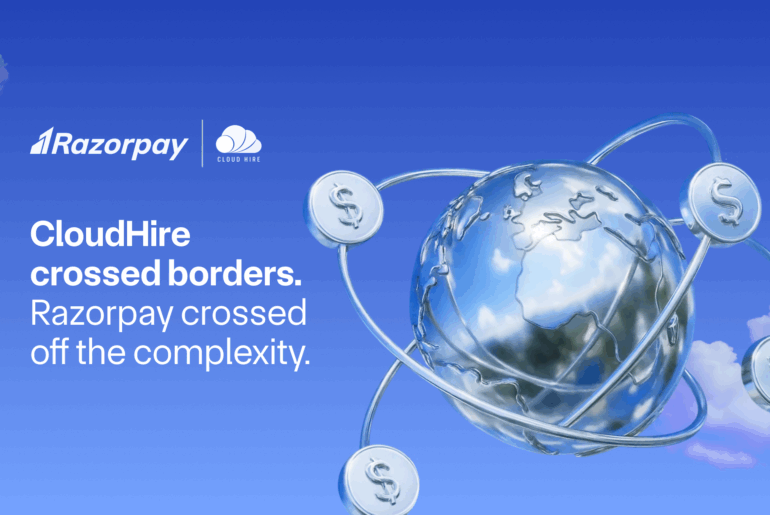Imagine this: You drive up to a petrol pump, fill your vehicle, and make the payment instantly—without waiting in a queue or interacting with anyone. This convenience is made possible by unattended payment terminals.
An unattended payment terminal is a self-service device that allows customers to complete transactions without the need for a cashier. The adoption of unattended payment solutions is growing rapidly in India and globally as consumers seek faster and more convenient transaction methods.
With Razorpay POS and UPI QR solutions, you too can easily set up unattended payment systems, ensuring fast, secure, and seamless transactions for your customers across industries.
Key Takeaways
Unattended payment terminals allow customers to complete transactions independently, without staff assistance.
These terminals are expected to see significant adoption in retail, transport, hospitality, and other high-traffic sectors.
Payments are secured through tokenisation and adherence to PCI DSS standards, ensuring customer data is protected.
Businesses can leverage Razorpay POS, UPI QR, and NFC-enabled solutions to provide fast, reliable, and fully digital payment experiences.
What are Unattended Payment Terminals?
Unattended payment terminals are self-service machines that allow customers to make payments without any cashier or staff involvement. These devices are equipped with secure card readers, QR code scanners, and NFC technology to support contactless and digital transactions.
They are a crucial part of today’s cashless economy, enabling faster, safer, and more convenient payments across multiple sectors. Businesses are increasingly adopting these unattended payment solutions to reduce operational costs and improve customer experience.
Common examples include:
- Vending machines
- Parking meters
- EV charging stations
- Ticket kiosks
Did You Know?
The global market for unattended payment terminals is projected to reach USD 5.83 billion by 2032.
Attended vs Unattended Terminals
The key difference between attended and unattended payment terminals is how the payment is handled. Attended terminals require a cashier or sales staff to operate the device and complete the transaction for the customer. In contrast, unattended payment terminals are fully self-service — the customer interacts directly with the machine to make the payment.
Attended systems suit businesses where assistance or upselling is part of the experience, like restaurants or retail stores. Unattended payment solutions, however, are designed for speed, convenience, and 24/7 accessibility — perfect for high-traffic, low-touch environments.
| Feature | Attended Terminals (staff-operated) | Unattended Terminals (self-service) |
| Operation | Managed by a cashier who handles each payment | Customer pays directly using the terminal |
| Setup cost | Lower device cost, but needs continuous staffing | Slightly higher setup cost, but no manpower required |
| Use cases | Ideal for shops, cafes, and restaurants | Common in parking lots, vending machines, and EV chargers |
| Customer experience | Personal service, but slower during rush hours | Instant payments, no queues, available round the clock |
| Security | Staff monitors transactions in person | Relies on digital encryption and fraud prevention tools |
| Flexibility | Works only during business hours | Operates anytime and anywhere without supervision |
With Razorpay POS, you can enable both attended and unattended terminals—giving your business the flexibility to serve every customer, in every setting.
How Do Unattended Terminals Work?
Unattended payment terminals make digital payments seamless by automating the entire transaction process. Whether at a petrol pump or a ticket kiosk, these terminals guide customers step by step to complete their payments securely.
Here’s how the process works:
- Select service: The customer begins by choosing the product or service they want on the terminal screen. This could be fuel at a petrol pump, a ticket at a kiosk, or a snack from a vending machine.
- Initiate payment: Once the selection is made, the terminal prompts the customer to pay. Payment can be made using a card, UPI, or by tapping a phone for a contactless payment.
- Razorpay processes: Razorpay securely handles the payment in real time. The terminal communicates with Razorpay’s system to verify and approve the transaction instantly.
- Settlement: After the payment is approved, the money is transferred directly to the merchant’s account within minutes. Customers receive confirmation on the terminal screen, ensuring the transaction is complete and transparent.
With Razorpay’s real-time reporting, businesses can easily monitor every transaction, track sales, and manage settlements from a single dashboard. It ensures complete transparency and makes payment management effortless.
Benefits of Unattended Terminals
Unattended payment terminals offer strong advantages for both businesses and customers. They simplify transactions, reduce costs, and enable cashless convenience across various industries.
For Businesses:
- 24/7 sales: Unattended payment terminals let businesses accept payments at any time of the day or night. Even when staff are not available, customers can still complete their purchases, ensuring that sales never stop.
- Lower staff costs: Since customers can make payments on their own, businesses don’t need as many cashiers or support staff. This helps reduce operational expenses while keeping the checkout process smooth.
- Multi-mode acceptance: These terminals can handle multiple types of payments from a single device. Customers can pay using debit or credit cards, UPI apps, or other contactless methods, giving them flexibility and convenience.
For Customers:
- Convenience: Customers can pay whenever they want, without waiting in long lines or depending on a cashier. This makes shopping, travelling, or using services much easier and more flexible.
- Speed: Payments are completed within seconds using methods like tapping a card, scanning a QR code, or swiping a card. This quick process saves time for customers.
- Privacy: Customers can maintain their privacy, since payments are processed directly on the terminal without involving staff or sharing sensitive information.
Industries Adopting Unattended Terminals
Unattended payment terminals are being adopted across various industries to speed up transactions and provide a smooth, staff-free payment experience. Here are the key industries that use unattended terminals:
- Retail: Many retail stores now offer self-checkout kiosks and vending machines, allowing customers to pay for products quickly without waiting in long billing lines. This makes shopping faster and more convenient for everyone.
- Transport: Unattended payment terminals are increasingly used in metro stations, parking lots, and highway toll booths. They help travellers pay quickly and move on, reducing queues and saving time.
- Hospitality: Hotels and restaurants are using self-service kiosks for tasks like check-ins, placing food orders, and paying bills. This lets customers complete these actions independently, without needing staff assistance.
- Utilities: Bill payment centres and recharge stations use unattended terminals so people can pay their utility bills or recharge services at any time. Customers don’t have to wait for a cashier, making the process fast and convenient.
Razorpay POS and UPI QR solutions are widely used in metros, parking spaces, and toll plazas to enable secure, cashless transactions. They reduce waiting time, improve efficiency, and make payment handling effortless for both customers and businesses.
Did You Know?
In India, unattended UPI kiosks are expanding rapidly across metro stations and parking lots, making digital payments more accessible than ever.
Security in Unattended Terminals
Security is a critical aspect of unattended payment terminals. Since these devices handle sensitive customer payment data without staff supervision, robust measures are essential to prevent fraud and ensure safe transactions.
Key security features include:
- PCI DSS compliance: The terminals follow global rules and standards to protect card and payment information from theft or misuse.
- Tokenisation: When you pay, your card details are changed into unique codes. This means even if someone hacks the system, they cannot use your actual card information.
- Two-Factor Authentication (2FA): An extra verification step makes sure only authorised people can access the terminal or manage transactions.
- Razorpay RFM (Risk and Fraud Management): All payments are monitored in real time to detect any unusual or suspicious activity and stop fraud immediately.
Compliance with security standards is vital for businesses to protect customer data, build trust, and avoid penalties. By integrating secure systems like Razorpay POS and UPI QR, merchants can confidently offer unattended payment solutions while maintaining regulatory compliance.
Challenges of Unattended Terminals
While unattended payment terminals offer convenience, they also come with certain challenges that you need to address.
- Vandalism: These payment terminals are placed in public areas, they can sometimes get damaged or tampered with. Businesses need to take precautions to keep them safe.
- Connectivity issues: If the internet or network is slow or unstable, payments may not process immediately, which can cause delays.
- Limited customer support: Since there is no staff at the machine, customers may find it harder to get help right away if something goes wrong during the payment.
- Setup cost: Installing unattended terminals and integrating them with payment systems can cost more initially compared to regular POS devices, though they save money in the long run.
Razorpay helps businesses overcome these challenges with smart solutions. It uses smart routing, which automatically sends payments through the most reliable channels, so transactions do not fail even if one network is slow. In addition, QR backups let customers complete their payments using their phone if the terminal faces a temporary problem. These features ensure that payments remain fast, safe, and seamless for both businesses and customers.
Ready to streamline your payments?
FAQs
1. What are unattended payment terminals?
They are self-service machines that let customers pay without a cashier, using cards, UPI, or contactless methods.
2. How are they different from attended terminals?
Attended terminals need a cashier, while unattended terminals allow customers to complete transactions on their own, making the process faster and more convenient.
3. Are they safe for customers?
Yes. They follow strict security measures like PCI DSS compliance, tokenisation, two-factor authentication, and real-time monitoring to keep payments secure.
4. What industries benefit most from them?
Retail, transport, hospitality, and utilities benefit the most. They help businesses handle high footfall efficiently and improve customer experience.
5. Does Razorpay support unattended payments?
Yes. Razorpay lets businesses accept payments on self-service machines quickly and safely.

